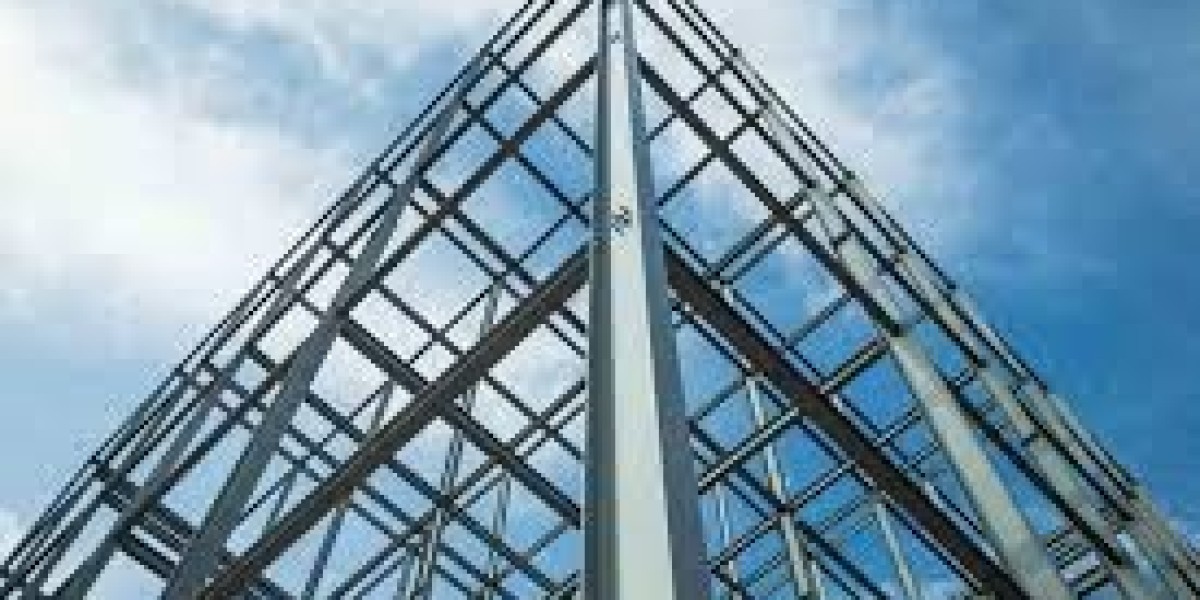The construction industry is undergoing a transformative shift toward eco-friendly solutions, driven by growing environmental awareness, stricter regulations, and an increasing demand for sustainable living and working spaces. Both residential and commercial construction sectors are embracing innovative sustainable materials that minimize environmental impact while delivering durability, efficiency, and long-term cost savings.
Whether you’re building a family home or a large commercial facility, the choice of materials directly influences energy efficiency, occupant comfort, and the project’s environmental footprint. From recycled steel and bamboo to high-performance insulation and low-VOC finishes, sustainable construction materials are proving that environmentally responsible design can also be aesthetically pleasing, cost-effective, and structurally robust.
This article explores how sustainable materials are shaping both residential and commercial construction, comparing their applications, benefits, and considerations so you can make well-informed decisions for your next project.
Understanding Sustainable Materials in Modern Construction
Sustainable materials are those sourced, produced, and utilized with minimal negative environmental impact. They are often renewable, recyclable, and energy-efficient, contributing to reduced greenhouse gas emissions over their lifecycle.
Common examples include:
Bamboo – Rapidly renewable, strong, and versatile for flooring, cabinetry, and structural elements.
Recycled steel – Durable and recyclable, ideal for structural frameworks.
Cross-laminated timber (CLT) – Engineered wood product offering strength and reduced carbon footprint.
Low-VOC paints and finishes – Improve indoor air quality by minimizing harmful emissions.
Insulated concrete forms (ICFs) – Provide excellent thermal efficiency and sound insulation.
Recycled glass and composite countertops – Stylish and environmentally friendly.
Sustainable materials are evaluated based on:
Renewability – Can the resource replenish quickly?
Embodied energy – Energy consumed during extraction, production, and transport.
Durability – How long the material lasts without significant maintenance.
End-of-life recyclability – Can the material be reused or recycled?
Residential Construction with Sustainable Materials
In the residential sector, sustainable materials are used to create homes that are not only eco-friendly but also healthier and more comfortable for occupants.
Key Applications
Framing and Structure
Many eco-conscious homeowners are turning to engineered wood products or recycled steel instead of traditional timber. These materials reduce deforestation and provide superior strength.Flooring
Bamboo and cork flooring are popular choices due to their renewable nature and natural beauty. They also offer hypoallergenic benefits and are comfortable underfoot.Insulation
Sustainable homes often use sheep’s wool, cellulose, or recycled denim insulation, which are biodegradable and non-toxic while maintaining excellent thermal performance.Roofing
Metal roofing with recycled content or green roofs planted with vegetation helps regulate indoor temperatures and manage stormwater runoff.Finishes
Low-VOC paints and water-based sealants are now standard in many sustainable home projects to improve indoor air quality.
Benefits for Homeowners
Lower utility bills through enhanced thermal efficiency.
Healthier indoor environment due to reduced chemical emissions.
Higher property value thanks to growing demand for eco-friendly homes.
Reduced maintenance costs because sustainable materials are often more durable.
Commercial Construction with Sustainable Materials
Commercial construction projects—such as office buildings, retail spaces, and industrial facilities—require materials that not only meet sustainability goals but also handle heavy use and meet strict safety codes.
Key Applications
Structural Components
Recycled steel and precast concrete reduce environmental impact while providing structural integrity.Facade and Cladding
High-performance glass and recycled aluminum panels improve building aesthetics and energy efficiency by maximizing natural light and minimizing heat gain.Interior Spaces
Sustainable carpeting made from recycled fibers, modular furniture with low environmental impact, and reclaimed wood paneling bring warmth and eco-friendliness to interiors.Roofing and Energy Systems
Green roofs and solar panel installations are increasingly common in commercial projects, offering energy savings and improved stormwater management.Water Management
Incorporating rainwater harvesting systems and low-flow fixtures reduces water consumption, a key sustainability metric for commercial buildings.
Benefits for Businesses
Lower operating costs through energy and water savings.
Enhanced corporate image by demonstrating environmental responsibility.
Compliance with green building certifications such as LEED or BREEAM.
Increased tenant satisfaction due to improved air quality and comfort.
Comparison Table: Residential vs. Commercial Construction with Sustainable Materials
Feature / Factor | Residential Construction | Commercial Construction |
Primary Goal | Comfort, energy savings, healthy living spaces | Operational efficiency, durability, sustainability |
Common Structural Materials | Engineered wood, bamboo, recycled steel | Recycled steel, precast concrete, cross-laminated timber |
Insulation Choices | Sheep’s wool, cellulose, recycled denim | Spray foam (low-VOC), mineral wool, recycled insulation panels |
Roofing Options | Metal roofing, green roofs, solar panels | Green roofs, reflective membranes, solar systems |
Interior Finishes | Low-VOC paints, cork floors, reclaimed wood | Recycled carpets, reclaimed wood paneling, modular eco-furniture |
Energy Systems | Solar PV, energy-efficient windows | Solar PV, building-integrated photovoltaics (BIPV) |
Water Management | Rain barrels, low-flow fixtures | Rainwater harvesting, greywater recycling |
Average Material Cost Impact | 5–15% higher upfront than conventional | 8–20% higher upfront than conventional |
Long-term Savings | Lower utility bills, minimal maintenance | Significant energy and water cost reductions |
Sustainability Certifications | Optional (LEED for Homes) | Often targeted (LEED, BREEAM, WELL Building) |
Analysis of the Comparison
While both residential and commercial construction benefit from sustainable materials, their priorities differ. Homeowners often focus on comfort, aesthetics, and personal well-being, while commercial developers prioritize operational efficiency, regulatory compliance, and long-term durability.
The upfront cost increase for sustainable materials is generally higher in commercial projects due to scale and stricter building performance requirements. However, the return on investment tends to be substantial over time thanks to significant reductions in energy and water expenses, enhanced tenant retention, and brand value.
Residential projects often have more flexibility in material selection, allowing for personal design preferences. Commercial projects, on the other hand, require materials that can withstand high traffic, comply with fire safety standards, and integrate with advanced building systems.
Practical Tips for Choosing Sustainable Materials
Evaluate Lifecycle Costs – Don’t just compare purchase prices; factor in maintenance, durability, and energy savings.
Check Certifications – Look for materials certified by organizations like FSC (Forest Stewardship Council), Cradle to Cradle, or Energy Star.
Prioritize Local Sourcing – Reducing transportation distance cuts carbon emissions and supports local economies.
Balance Performance and Aesthetics – Sustainable materials should meet performance requirements without sacrificing design appeal.
Consider Future Upgrades – Choose modular or adaptable systems to accommodate future improvements without waste.
Frequently Asked Questions (FAQ)
1. Are sustainable materials more expensive than traditional options?
Yes, sustainable materials often have a higher upfront cost—ranging from 5% to 20% more—due to advanced manufacturing processes and certifications. However, they usually result in lower long-term costs through reduced energy bills and maintenance.
2. Can sustainable materials be used in both new construction and renovations?
Absolutely. Sustainable materials are ideal for both new builds and retrofitting existing structures, making them a flexible choice for various project types.
3. Which sustainable materials are best for high-traffic commercial areas?
Recycled steel, precast concrete, and high-performance glass are excellent choices for commercial projects due to their durability, safety compliance, and efficiency.
4. How do sustainable materials improve indoor air quality?
By using low-VOC paints, finishes, and adhesives, sustainable materials reduce the emission of harmful chemicals, improving occupant health and comfort.
5. What certifications should I look for when sourcing sustainable materials?
Look for LEED, BREEAM, FSC, Cradle to Cradle, and Greenguard certifications to ensure materials meet high environmental and safety standards.
Conclusion
The adoption of sustainable materials in both residential and commercial construction is more than just a trend—it’s a necessity for building a greener, healthier future. While the goals and applications differ between the two sectors, the benefits are universal: reduced environmental impact, improved energy efficiency, healthier indoor environments, and long-term cost savings.
By carefully selecting the right sustainable materials, builders, homeowners, and developers can create spaces that meet modern performance standards while preserving the planet’s resources. Whether you’re designing your dream home or planning a large-scale commercial facility, the investment in eco-friendly construction materials pays dividends in comfort, durability, and environmental responsibility.
Start your next project with sustainability in mind, and build not just for today—but for generations to come.








